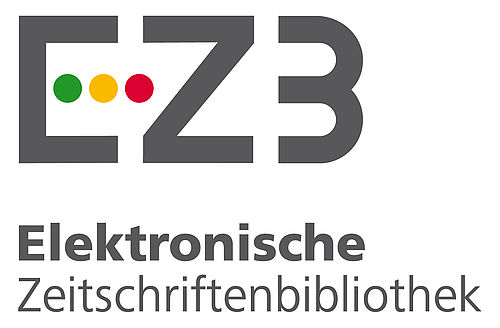Abstract
Project Number
SUBAP- 23202037
References
- 1. Arcone, R., D’Errico, A., Nasso, R., Rullo, R., Poli, A., Di Donato, P., & Masullo, M. (2023). Inhibition of Enzymes Involved in Neurodegenerative Disorders and A β 1–40 Aggregation by Citrus limon Peel Polyphenol Extract. Molecules, 28(17), 6332.
- 2. Bhatia, A., Singh, B., Arora, R., & Arora, S. (2019). In vitro evaluation of the α-glucosidase inhibitory potential of methanolic extracts of traditionally used antidiabetic plants. BMC complementary and alternative medicine, 19, 1-9.
- 3. Boath, A. S., Grussu, D., Stewart, D., & McDougall, G. J. (2012). Berry polyphenols inhibit digestive enzymes: a source of potential health benefits? Food Digestion, 3, 1-7.
- 4. Chun, S.-S., Vattem, D. A., Lin, Y.-T., & Shetty, K. (2005). Phenolic antioxidants from clonal oregano (Origanum vulgare) with antimicrobial activity against Helicobacter pylori. Process Biochemistry, 40(2), 809-816.
- 5. Clarke, G., Ting, K. N., Wiart, C., & Fry, J. (2013). High correlation of 2, 2-diphenyl-1-picrylhydrazyl (DPPH) radical scavenging, ferric reducing activity potential and total phenolics content indicates redundancy in use of all three assays to screen for antioxidant activity of extracts of plants from the Malaysian rainforest. Antioxidants, 2(1), 1-10.
- 6. Dal, S., & Sigrist, S. (2016). The protective effect of antioxidants consumption on diabetes and vascular complications. Diseases, 4(3), 24.
- 7. Fredes González, C. P., Montenegro Rizzardini, G., Zoffoli, J. P., Santander, F., & Robert Canales, P. S. (2014). Comparison of the total phenolic content, total anthocyanin content and antioxidant activity of polyphenol-rich fruits grown in Chile.
- 8. Huang, W.-y., Zhang, H.-c., Liu, W.-x., & Li, C.-y. (2012). Survey of antioxidant capacity and phenolic composition of blueberry, blackberry, and strawberry in Nanjing. Journal of Zhejiang University Science B, 13, 94-102.
- 9. Ibach, B., & Haen, E. (2004). Acetylcholinesterase inhibition in Alzheimer's Disease. Current Pharmaceutical Design, 10(3), 231-251.
- 10. Jeong, S. H., Ryu, Y. B., Curtis-Long, M. J., Ryu, H. W., Baek, Y. S., Kang, J. E., Lee, W. S., & Park, K. H. (2009). Tyrosinase inhibitory polyphenols from roots of Morus lhou. Journal of agricultural and food chemistry, 57(4), 1195-1203.
- 11. Lobo, V., Patil, A., Phatak, A., & Chandra, N. (2010). Free radicals, antioxidants and functional foods: Impact on human health. Pharmacognosy reviews, 4(8), 118.
- 12. Manoharan, S., Guillemin, G. J., Abiramasundari, R. S., Essa, M. M., Akbar, M., & Akbar, M. D. (2016). The role of reactive oxygen species in the pathogenesis of Alzheimer’s disease, Parkinson’s disease, and Huntington’s disease: a mini review. Oxidative medicine and cellular longevity, 2016.
- 13. Martins, M. S., Gonçalves, A. C., Alves, G., & Silva, L. R. (2023). Blackberries and mulberries: Berries with significant health-promoting properties. International Journal of Molecular Sciences, 24(15), 12024.
- 14. Nagatsu, T., Nakashima, A., Watanabe, H., Ito, S., & Wakamatsu, K. (2022). Neuromelanin in Parkinson’s disease: tyrosine hydroxylase and tyrosinase. International Journal of Molecular Sciences, 23(8), 4176.
- 15. Quettier-Deleu, C., Gressier, B., Vasseur, J., Dine, T., Brunet, C., Luyckx, M., Cazin, M., Cazin, J.-C., Bailleul, F., & Trotin, F. (2000). Phenolic compounds and antioxidant activities of buckwheat (Fagopyrum esculentum Moench) hulls and flour. Journal of ethnopharmacology, 72(1-2), 35-42.
- 16. Sariburun, E., Şahin, S., Demir, C., Türkben, C., & Uylaşer, V. (2010). Phenolic content and antioxidant activity of raspberry and blackberry cultivars. Journal of food science, 75(4), C328-C335.
- 17. Šinko, G., Čalić, M., Bosak, A., & Kovarik, Z. (2007). Limitation of the Ellman method: Cholinesterase activity measurement in the presence of oximes. Analytical biochemistry, 370(2), 223-227.
- 18. Tan, Y., & Chang, S. K. (2017). Digestive enzyme inhibition activity of the phenolic substances in selected fruits, vegetables and tea as compared to black legumes. Journal of Functional Foods, 38, 644-655.
- 19. Tundis, R., Loizzo, M. R., & Menichini, F. (2010). Natural products as α-amylase and α-glucosidase inhibitors and their hypoglycaemic potential in the treatment of diabetes: an update. Mini reviews in medicinal chemistry, 10(4), 315-331.
- 20. Wang, H., Gao, X. D., Zhou, G. C., Cai, L., & Yao, W. B. (2008). In vitro and in vivo antioxidant activity of aqueous extract from Choerospondias axillaris fruit. Food Chemistry, 106(3), 888-895.
- 21. Yang, X., & Kong, F. (2016). Effects of tea polyphenols and different teas on pancreatic α-amylase activity in vitro. LWT-Food Science and Technology, 66, 232-238.
Phytochemical Investigation, Antioxidant, and Enzyme Inhibitory Activities of Blackberry (Rubus fruticosus) Fruits
Abstract
This scientific paper explores the phytochemical composition of blackberry (Rubus fruticosus) fruit and investigates its antioxidant and enzyme inhibitory activities. Blackberry is known for its rich nutritional profile and potential health benefits, making it a subject of interest in the field of functional foods and natural medicine. The study aims to provide valuable insights into the bioactive compounds present in blackberry fruit, their antioxidant properties, and their potential as enzyme inhibitors. According to the results, it was determined that the fruit extracts had strong antioxidant and moderate enzyme inhibition activity. HPLC analysis showed that the fruit extract generally contained o-coumaric acid, procatechin, ellagic acid and quercetin as major components.
Supporting Institution
Selcuk University Scientific Research Foundation
Project Number
SUBAP- 23202037
Thanks
The authors extend their appreciation to the Selcuk University Scientific Research Foundation for funding this research work through the project number: SUBAP- 23202037. We would like to thank research assistant M. Raşit Bakır for his support in the HPLC analysis.
References
- 1. Arcone, R., D’Errico, A., Nasso, R., Rullo, R., Poli, A., Di Donato, P., & Masullo, M. (2023). Inhibition of Enzymes Involved in Neurodegenerative Disorders and A β 1–40 Aggregation by Citrus limon Peel Polyphenol Extract. Molecules, 28(17), 6332.
- 2. Bhatia, A., Singh, B., Arora, R., & Arora, S. (2019). In vitro evaluation of the α-glucosidase inhibitory potential of methanolic extracts of traditionally used antidiabetic plants. BMC complementary and alternative medicine, 19, 1-9.
- 3. Boath, A. S., Grussu, D., Stewart, D., & McDougall, G. J. (2012). Berry polyphenols inhibit digestive enzymes: a source of potential health benefits? Food Digestion, 3, 1-7.
- 4. Chun, S.-S., Vattem, D. A., Lin, Y.-T., & Shetty, K. (2005). Phenolic antioxidants from clonal oregano (Origanum vulgare) with antimicrobial activity against Helicobacter pylori. Process Biochemistry, 40(2), 809-816.
- 5. Clarke, G., Ting, K. N., Wiart, C., & Fry, J. (2013). High correlation of 2, 2-diphenyl-1-picrylhydrazyl (DPPH) radical scavenging, ferric reducing activity potential and total phenolics content indicates redundancy in use of all three assays to screen for antioxidant activity of extracts of plants from the Malaysian rainforest. Antioxidants, 2(1), 1-10.
- 6. Dal, S., & Sigrist, S. (2016). The protective effect of antioxidants consumption on diabetes and vascular complications. Diseases, 4(3), 24.
- 7. Fredes González, C. P., Montenegro Rizzardini, G., Zoffoli, J. P., Santander, F., & Robert Canales, P. S. (2014). Comparison of the total phenolic content, total anthocyanin content and antioxidant activity of polyphenol-rich fruits grown in Chile.
- 8. Huang, W.-y., Zhang, H.-c., Liu, W.-x., & Li, C.-y. (2012). Survey of antioxidant capacity and phenolic composition of blueberry, blackberry, and strawberry in Nanjing. Journal of Zhejiang University Science B, 13, 94-102.
- 9. Ibach, B., & Haen, E. (2004). Acetylcholinesterase inhibition in Alzheimer's Disease. Current Pharmaceutical Design, 10(3), 231-251.
- 10. Jeong, S. H., Ryu, Y. B., Curtis-Long, M. J., Ryu, H. W., Baek, Y. S., Kang, J. E., Lee, W. S., & Park, K. H. (2009). Tyrosinase inhibitory polyphenols from roots of Morus lhou. Journal of agricultural and food chemistry, 57(4), 1195-1203.
- 11. Lobo, V., Patil, A., Phatak, A., & Chandra, N. (2010). Free radicals, antioxidants and functional foods: Impact on human health. Pharmacognosy reviews, 4(8), 118.
- 12. Manoharan, S., Guillemin, G. J., Abiramasundari, R. S., Essa, M. M., Akbar, M., & Akbar, M. D. (2016). The role of reactive oxygen species in the pathogenesis of Alzheimer’s disease, Parkinson’s disease, and Huntington’s disease: a mini review. Oxidative medicine and cellular longevity, 2016.
- 13. Martins, M. S., Gonçalves, A. C., Alves, G., & Silva, L. R. (2023). Blackberries and mulberries: Berries with significant health-promoting properties. International Journal of Molecular Sciences, 24(15), 12024.
- 14. Nagatsu, T., Nakashima, A., Watanabe, H., Ito, S., & Wakamatsu, K. (2022). Neuromelanin in Parkinson’s disease: tyrosine hydroxylase and tyrosinase. International Journal of Molecular Sciences, 23(8), 4176.
- 15. Quettier-Deleu, C., Gressier, B., Vasseur, J., Dine, T., Brunet, C., Luyckx, M., Cazin, M., Cazin, J.-C., Bailleul, F., & Trotin, F. (2000). Phenolic compounds and antioxidant activities of buckwheat (Fagopyrum esculentum Moench) hulls and flour. Journal of ethnopharmacology, 72(1-2), 35-42.
- 16. Sariburun, E., Şahin, S., Demir, C., Türkben, C., & Uylaşer, V. (2010). Phenolic content and antioxidant activity of raspberry and blackberry cultivars. Journal of food science, 75(4), C328-C335.
- 17. Šinko, G., Čalić, M., Bosak, A., & Kovarik, Z. (2007). Limitation of the Ellman method: Cholinesterase activity measurement in the presence of oximes. Analytical biochemistry, 370(2), 223-227.
- 18. Tan, Y., & Chang, S. K. (2017). Digestive enzyme inhibition activity of the phenolic substances in selected fruits, vegetables and tea as compared to black legumes. Journal of Functional Foods, 38, 644-655.
- 19. Tundis, R., Loizzo, M. R., & Menichini, F. (2010). Natural products as α-amylase and α-glucosidase inhibitors and their hypoglycaemic potential in the treatment of diabetes: an update. Mini reviews in medicinal chemistry, 10(4), 315-331.
- 20. Wang, H., Gao, X. D., Zhou, G. C., Cai, L., & Yao, W. B. (2008). In vitro and in vivo antioxidant activity of aqueous extract from Choerospondias axillaris fruit. Food Chemistry, 106(3), 888-895.
- 21. Yang, X., & Kong, F. (2016). Effects of tea polyphenols and different teas on pancreatic α-amylase activity in vitro. LWT-Food Science and Technology, 66, 232-238.
Details
| Primary Language | English |
|---|---|
| Subjects | Pharmacognosy |
| Journal Section | Research Article |
| Authors | |
| Project Number | SUBAP- 23202037 |
| Submission Date | April 2, 2024 |
| Acceptance Date | May 11, 2024 |
| Early Pub Date | May 25, 2024 |
| Publication Date | July 6, 2024 |
| Published in Issue | Year 2024 Volume: 7 Issue: 1 |
-------------------------------------------------------------------------------------------------------------------------------













-------------------------------------------------------------------------------------------------------------------------
 CUPMAP Journal is licensed under a Creative Commons Attribution-NonCommercial-NoDerivatives 4.0 International License.
CUPMAP Journal is licensed under a Creative Commons Attribution-NonCommercial-NoDerivatives 4.0 International License.
-----------------------------------------------------------------------------------------------------------------------------------------
This is an open access journal which means that all content is freely available without charge to the user or his/her institution. Users are allowed to read, download, copy, distribute, print, search, or link to the full texts of the articles, or use them for any other lawful purpose, without asking prior permission from the publisher or the author. This is in accordance with the BOAI definition of open access.
